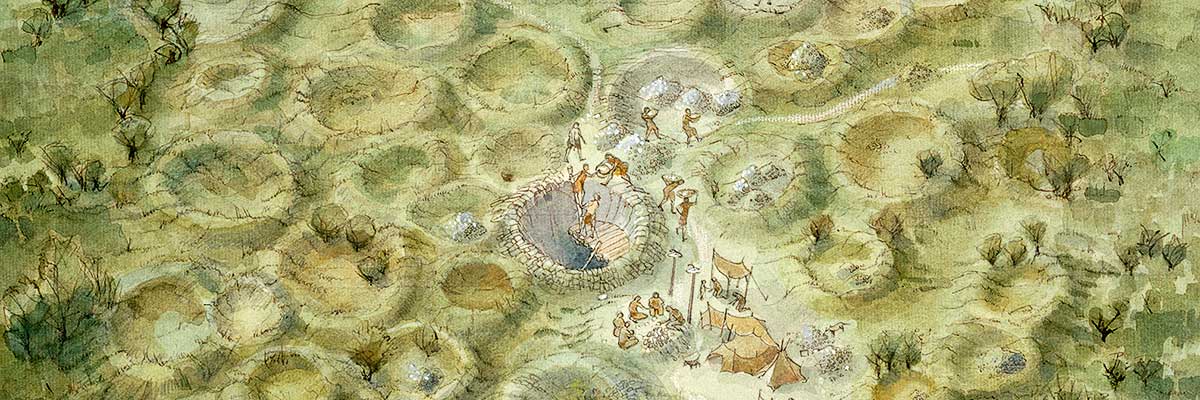Significance of Grime’s Graves
Grime’s Graves is the only known late Neolithic flint mine in England, and was first used some 4,500 years ago. It was the first archaeological site in the UK to be recognised as a Neolithic flint mine, in 1868–70.[1] It is currently the most studied site of its type.

Prehistoric Flint Mines
Grime's Graves is one of only ten known flint mines in England.[2] There are two other sites in Scotland and a small number in Ireland.
Considering there are about 70 causewayed enclosures, nearly 540 long barrows, over 100 mortuary enclosures, 14 bank barrows and more than 40 long mounds known in the UK, flint mines are some of the rarest Neolithic monuments in the country.
Flint Extraction
The 'Gathering Time' project,[3] which has critically analysed and remodelled the chronology of the early Neolithic period, has demonstrated that flint mines are some of the earliest (if not the earliest) sites created in the Neolithic landscape.
Flint mining was therefore one of the first activities carried out by the incipient Neolithic communities. It may even have been one of the principal motivations underpinning the colonisation of south-eastern Britain – a quest for new and exotic types of stone.
The extraction of flint was clearly a pivotal part of the creation of Neolithic communities and how they defined their identities before the more tangible monuments, such as long barrows and causewayed enclosures, were built.
Rituals and Ceremonies
One fundamental question relating to flint mining is why the Neolithic miners dug for flint when adequate surface deposits were available. The fact that some mines were excavated in a ritualised way implies that mined flint had a greater cultural value. It had to be dug out in special ways, and its worth was enhanced when it was knapped into certain types of tool.
Some flint axes, for example, were never used. Such objects were often buried in hoards, suggesting they were ceremonial in purpose rather than functional. These axes and other tools appear to have been distributed widely across the country, demonstrating that artefacts crafted from mined flint were important to many aspects of Neolithic life.
Such importance must have meant that the rare flint mines became special places for the communities that exploited them.
Landscape
In 1985 Grime's Graves was designated a Site of Special Scientific Interest (SSSI) for its flora and fauna. The combination of chalk soils, sandy heath and acid grassland supports a wide range of unusual plants. Some of the re-excavated mines provide winter roosting for five species of bat.
READ MORE ABOUT GRIME'S GRAVES
Footnotes
1. W Greenwell, 'On the opening of Grime's Graves in Norfolk', Journal of the Ethnological Society of London, new series, 2 (1870), 419–39 (accessed 1 Sept 2015).
2. M Barber, D Field and P Topping, The Neolithic Flint Mines of England (English Heritage/Royal Commission on the Historical Monuments of England, Swindon, 1999).
3. A Whittle, F Healy and A Bayliss, Gathering Time: Dating the Early Neolithic Enclosures of Southern Britain and Ireland (Oxford, 2011).